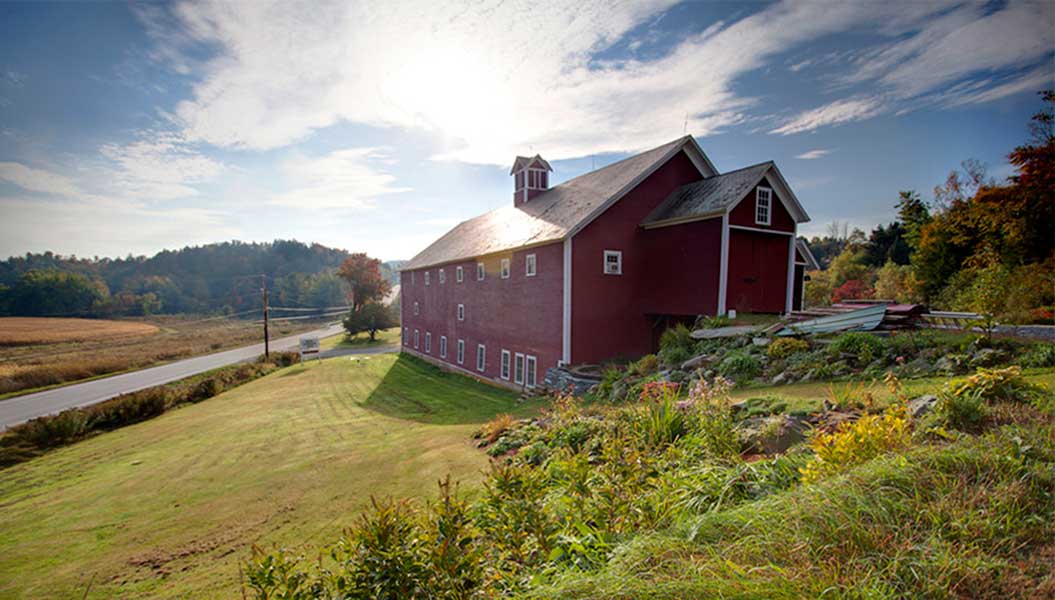Partnership with Vermont Woodworking School produces new B.F.A. program
The Vermont Woodworking School in Fairfax, Vt.
When Burlington College announced its closure last spring, it left current and prospective students in the lurch. JSC stepped in to help where possible, accepting many of Burlington College’s students, and acquired an entirely new degree program in the form of a B.F.A. and an A.A. in Fine Woodworking and Furniture Design.
To offer the program as a fully-fledged JSC degree, the curriculum had to be approved for accreditation by the New England Association of Schools and Colleges (NEASC).
“Initially, it was just the college helping those students who were screwed by the disappearance of Burlington College to finish the degree plans they started,” said Ken Leslie, the chair of the art department at Johnson and the program manager of the new degree. “[NEASC doesn’t] make you jump through too many hoops in order to help out in this situation, but if you want to keep offering the degree, beyond the people in the pipeline of that degree, then you have to jump all those millions of hoops. And we did do that last year. The college decided, ‘Yeah, this is a kind of cool program and let’s see if we can push it forward.’”
The woodworking degree works in partnership with the Vermont Woodworking School (VWS), located in Fairfax. The VWS offers its own immersion program in woodworking, but the partnership with JSC allows students to gain an accredited degree with the help of state and federal financial aid, as well as any veteran’s benefits that may be available to them.
Leslie believes that the degree program will bring in students who are looking for an accredited woodworking experience and may not have otherwise chosen to come to JSC.
“There are very few woodworking programs in the country,” said Leslie. “There are less than 10 in the country, and most of them are very far from here. And the woodworking school has a really excellent national reputation for real quality work.”
The woodworking degree program is now in its second year, and the students who are part of it can reflect on their experiences with both schools.
“[Burlington College] went away just about as my first semester was about to start,” said Charlie Baylor, a woodworking student in his second year. “So I never really attended, but I was technically affected . . . I think there’s a lot more opportunities than there were with Burlington, just in the academic side of things.”
Students like Baylor had merely been accepted to Burlington College before its closure, while others had already taken a year or more at the now-defunct school.
Christian Wakeman, currently a senior at JSC, had taken two years of classes at Burlington College before coming to JSC. “Johnson’s far better. They offer a better variety of classes than Burlington did,” he said. “At Burlington, the class sizes were like six or seven, so it was just so small that you feel like you’re sitting in a closet, just closed in with people. Here, you have room to spread out and really do your work.”
Both Baylor and Wakeman said that their VWS classes are a great addition to their education.
“Honestly, I’m kind of upset this semester because I have no more classes there,” said Wakeman. “I love the classes there. They’re awesome. The professors over there really make them so much better.”
Being a student of both schools can be about more than just academics — it can also be about bringing the communities together.
“I try to bring people from the woodworking school over to Johnson to see art galleries here, and vice versa,” said Wakeman. “Not many people from Johnson go out of their way to drive a half hour to that school to check it out.”
Woodworking B.F.A. students take their gen. ed. classes at JSC, as well as at least 33 credits of their degree-specific requirements, and take around 50 credits at the VWS.
“Their degree does have other, larger issues of design and creativity required,” said Leslie. “So they have all this woodworking experience, but they need to have a three-dimensional sculptural experience that doesn’t involve wood [and] they need to consider the possibilities for color when it’s pure color and not just the colors of wood . . . And there’s certainly a full range of art history. They take the same Western and non-Western art history surveys and some other advanced art history courses.”
As for the future of JSC’s partnership with the VWS, Leslie said that he could see a potential M.F.A., similar to what the school already offers in partnership with the Vermont Studio Center, if things continue to go well.
While pondering potentials, Leslie explored the idea of finding other places to grow JSC’s art offerings: “There are other really classic and wonderful and important Vermont industries beyond furniture making, like the stone carving world, where there are places in Vermont where you could seriously study, and they might want to be able to partner with us . . . I’m just imagining, but I could imagine that.”
Although such possibilities are only hypothetical at this point, it is a nice future to imagine.
“I do like the idea of Johnson being not only strong for its creative programs but also folding in some programs that address the classic arts, which we want to be able to preserve,” said Leslie. Speaking to Vermont’s redeveloping interest in local artisanship, he added, “I think it’s kind of interesting and really wonderful, and we are really well positioned to jump into that.”



